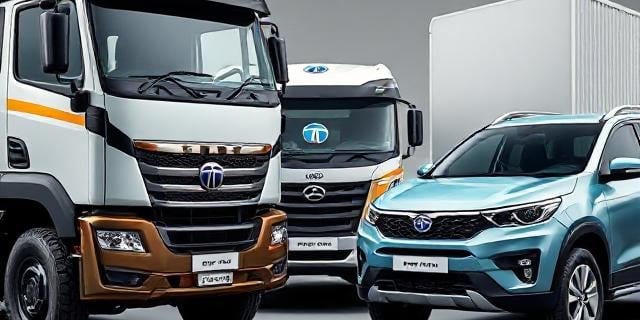Tata Motors Demerger
Tata Motors
5/16/20253 min read


Why Tata motors being splitting/Demerger Into Two Companies?
Let’s understand it.
With the Shareholders approval, Tata motors is splitting into two public listed entities.
1. First Entity would focus on Commercial Vehicle business (Trucks, Buses, Vans)
2. Another Entity would focus on Passenger Vehicle business (Jaguar Land Rover (JLR), Cars, EV, Autonomous vehicle)
For Shareholders prospective:-
Share Entitlement Ratio: For every one fully paid-up share of ₹2 held in the current Tata Motors Limited (TML), shareholders will receive one fully paid-up share of ₹2 in the new CV company (which will become Tata Motors Ltd).
Identical Shareholding: This 1:1 ratio means shareholders will maintain an identical proportionate shareholding in both new listed entities.
Consistent Promoter Holding: Both new companies will have identical shareholding patterns, including common promoters, ensuring no dilution of promoter holding. This approach aims for fairness and transparent value distribution.
Why does this Spilt happen?
Unlock Share holders Value:- Distinct Entities would create more value to the shareholders which can be assessed by individual specific metrics, growth and expansion accurately.
Focused more on Specific Business Segments:- CV is more focused by Industrial cycles and OV segment is more consumer driven for e.g.- Electric vehicle, Autonomous vehicle etc.
Synergies Between PV, JLR & CV:- CV and PV synergies are limited but JLR & PV has lot of synergies and can be utilised with this demerger.
Boost from India-UK Free Trade Agreement (FTA)
The recently signed India-UK FTA is set to benefit JLR significantly.
Automotive import tariffs on UK vehicles into India will reduce from over 100% to just 10% under a quota system.
This could make JLR vehicles more competitive in India, potentially increasing sales.
While specific quota details are awaited, the principle of lower tariffs is a positive development.
The Road Ahead: Future Trajectories for CV & PV Segment
Tata Motors Ltd (New CV Entity)-Commercial Vehicle
Strategy Focus: Will operate under the new mantra of 'Better Always', committing to continuous improvement and customer-centric solutions in the CV space.
Technological Advancements:
The company has a Focus on green technologies, including trials of hydrogen-powered heavy-duty trucks (e.g., Prima H.28 with a ~550km range).
Integration of smart Advanced Driver Assistance Systems (ADAS) across its CV range.
Market Outlook & Projections:
Anticipates a rise in industry demand in FY26, driven by higher fleet utilisation, potential interest rate cuts, lower crude oil prices, and renewed government infrastructure projects.
Mindful of potential price impacts from new regulations (e.g., AC in truck cabins).
International Performance:
International CV sales surged by 30% in Q4 FY25.
Historically, Tata Motors has established CV presence in markets like South Africa, Thailand, and Argentina.
Key Challenges:
Faces intense competition in the Small Commercial Vehicle (SCV) segment in India, notably from Mahindra & Mahindra, which has led to some market share erosion for Tata Motors.
Tata Motors Passenger Vehicles Ltd (New PV, JLR, EV Entity)
Strategy Focus:
Leverage synergies across PV, EV, and JLR operations, especially in EV technology, autonomous driving, and vehicle software.
Continue a multi-powertrain approach (petrol, diesel, CNG, electric).
Electric Vehicle (EV) Emphasis:
EVs are central to its future. They currently account for 12% of Tata's PV portfolio, and the company aims for over 30% by decade-end.
Upcoming EV launches: Harrier EV and Sierra EV.
Tata Passenger Electric Mobility already holds a dominant share in India's EV market.
Jaguar Land Rover's Strategic Role:
JLR's "Reimagine" strategy will shape the luxury and premium offerings, emphasising electrification, modern luxury, and sustainability.
Market Outlook & Projections:
Future growth expected from SUVs, CNG vehicles, and accelerating EV adoption.
Overall, PV demand is influenced by macroeconomic factors (consumer spending, inflation, infrastructure investment, global geopolitics).
In Conclusion: A Strategic Reshuffle for Focused Growth and Value Creation.
The demerger of Tata Motors is a landmark strategic initiative, strongly endorsed by its shareholders. This move creates two more focused, agile, and accountable automotive giants.
Core Aim: Separating Commercial Vehicles from Passenger Vehicles (including JLR and EVs) aims to unlock shareholder value through more accurate market pricing.
Empowerment: It empowers each entity to pursue tailored growth strategies and achieve superior operational efficiencies.
